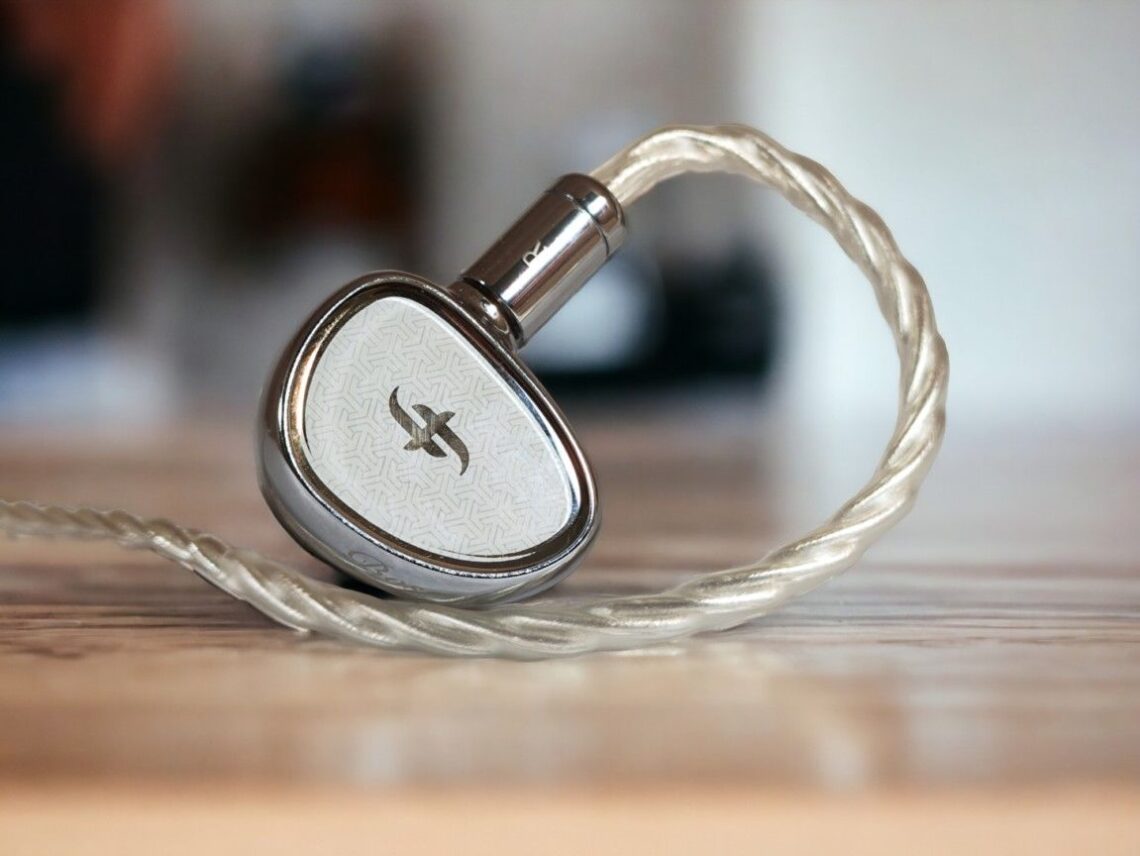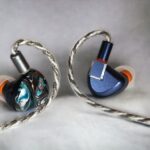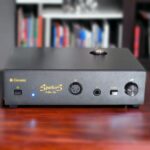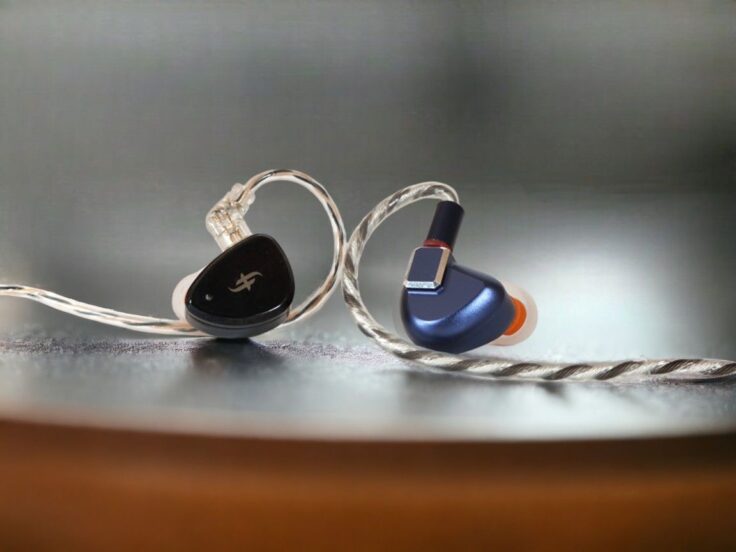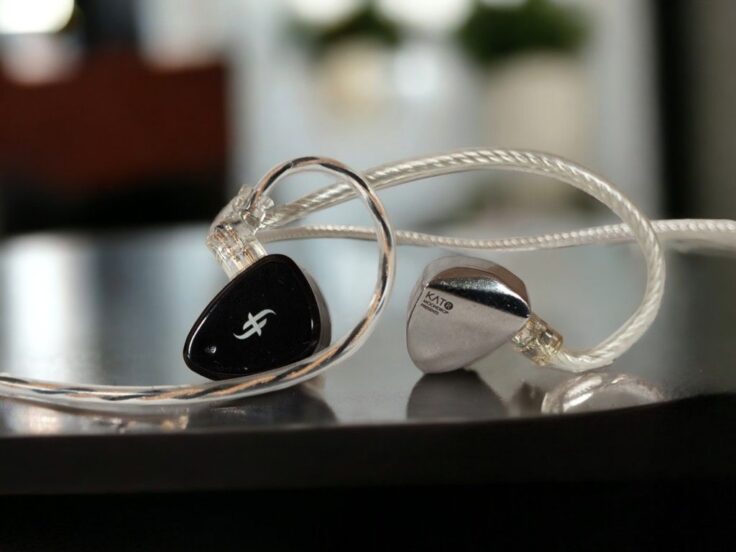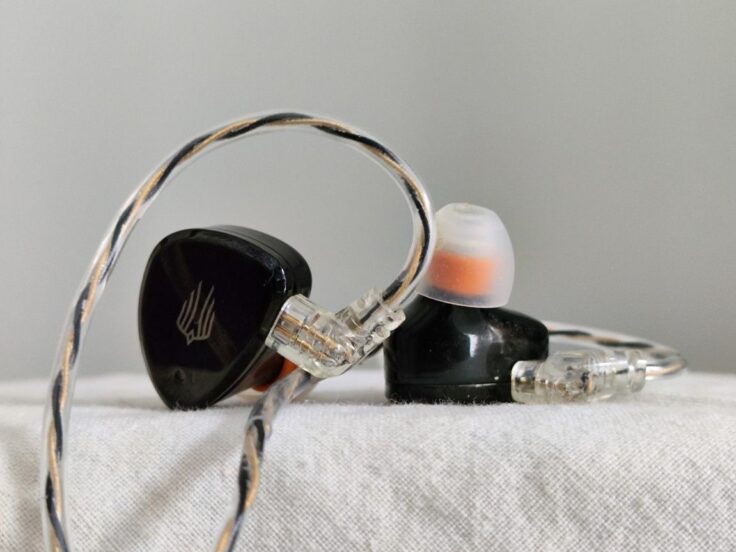Launched in 2023, the EA2000 is Simgot’s current flagship. It introduced technology that has trickled down to the EA1000, EA500 and EA500LM, which in many ways are scaled-down versions and variations of the flagship. Even though the smaller and newer siblings have gotten a lot of praise, the EA2000 still is worthy of the flagship status.
SIMGOT means “Simple and elegant” and is an established brand of reasonably priced high-quality IEMs. Its first major offering was the EN700 in 2016.
The EA2000 is a single Dynamic Driver (DD) in-ear monitor with a semi-closed construction utilizing a passive radiator along with the driver. A passive radiator is a diaphragm with no coil or magnet that passively responds to the air pressure inside the chamber, which fluctuates with the main driver.
The EA2000 uses Simgot’s DMDC “Dual Magnetic/Dual Chamber” driver, which is a construction having both inner and outer magnetic circuits. This increases magnetic flux (power) and increases the control of the diaphragm.
The EA2000 has a large 12 mm driver, which has an area of 113 mm2. The smaller sibling, EA1000, has a 10 mm dynamic driver, which basic math tells us has a surface area of 78.5 mm2. Thus, the EA2000 driver has almost 50% larger surface area. For reference, the Sennheiser IE200, IE600, and IE900 all have the same 7mm driver, so both 10 and 12 mm are relatively large.
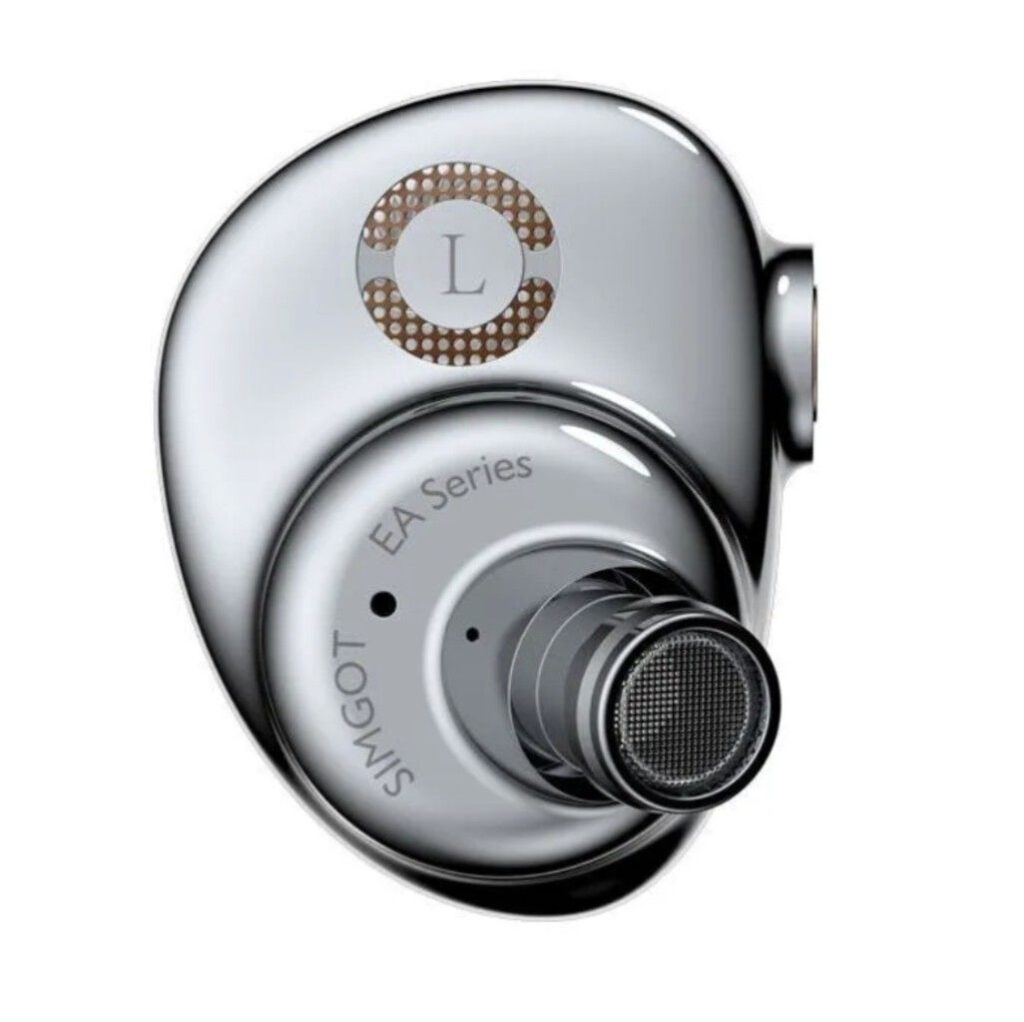
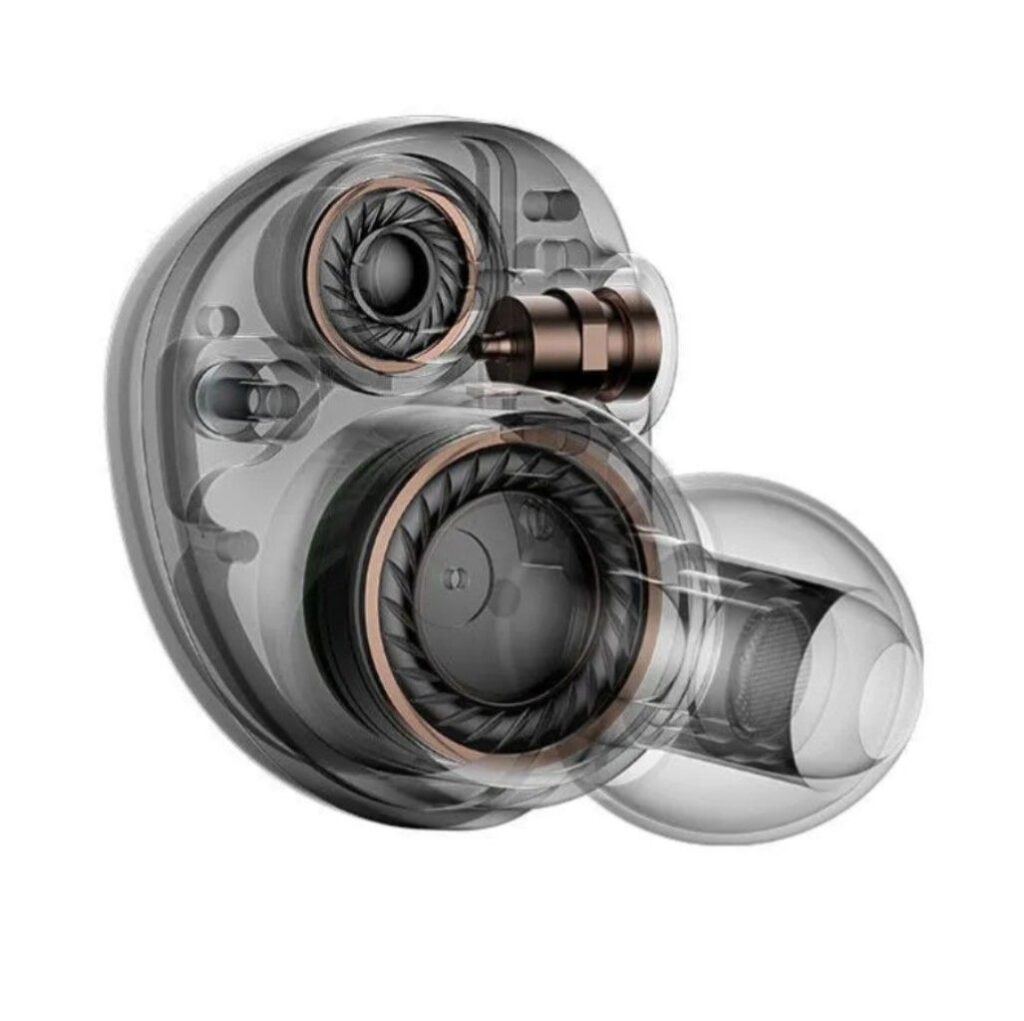
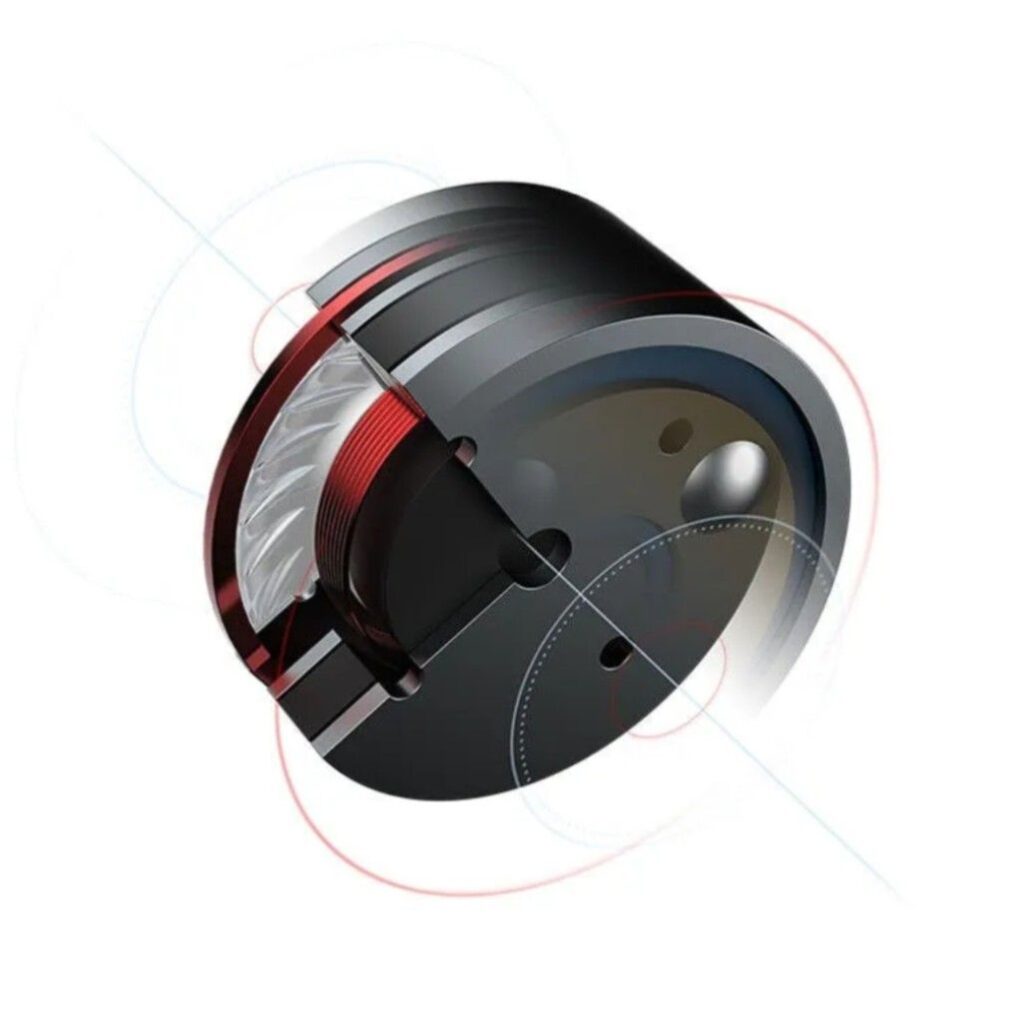
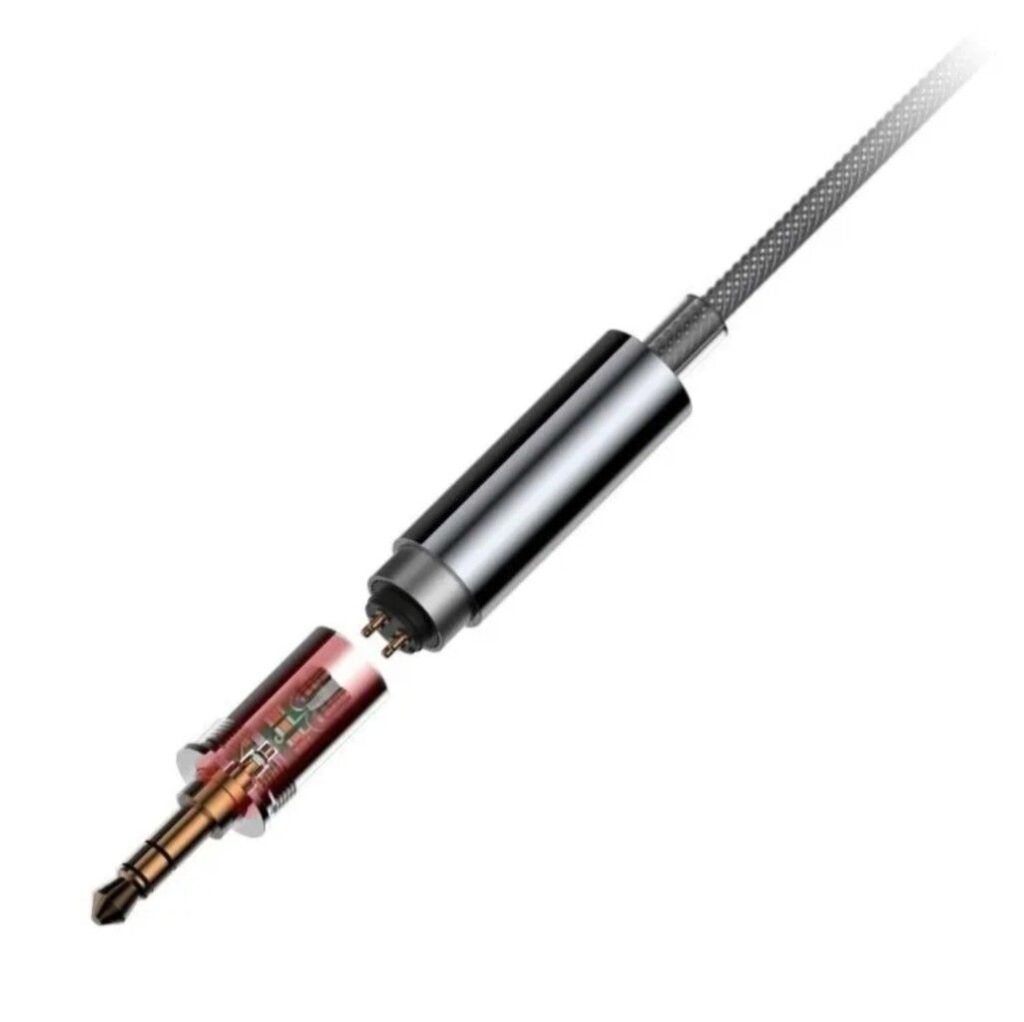
EA2000 TUNING CONNECTOR PLUGS
The EA2000 has an exchangeable special tuning plug built into the 3.5mm/4.4mm connector that goes into the amp or DAC.
There are two versions: a black, which comes in 3.5mm and 4.4mm connectors, and a blue, which only comes in 3.5mm. I have tried both the black and blue versions, and they certainly do make a difference.
The blue is supposed to make the EA2000 sound less bright and more intimate. That’s exactly what it does. However, it also takes away some of the fabulous detail and dynamics, and makes the EA2000 sound more like a re-tuned EA1000. In other words, it still sounds very good, but it’s not as good as the EA2000 with the standard plug.
I tried out a third-party cable with no tuning filter, and it sounds very much like the black plug, which I suspect is just a straight connector. The blue plug is where the tuning is happening.
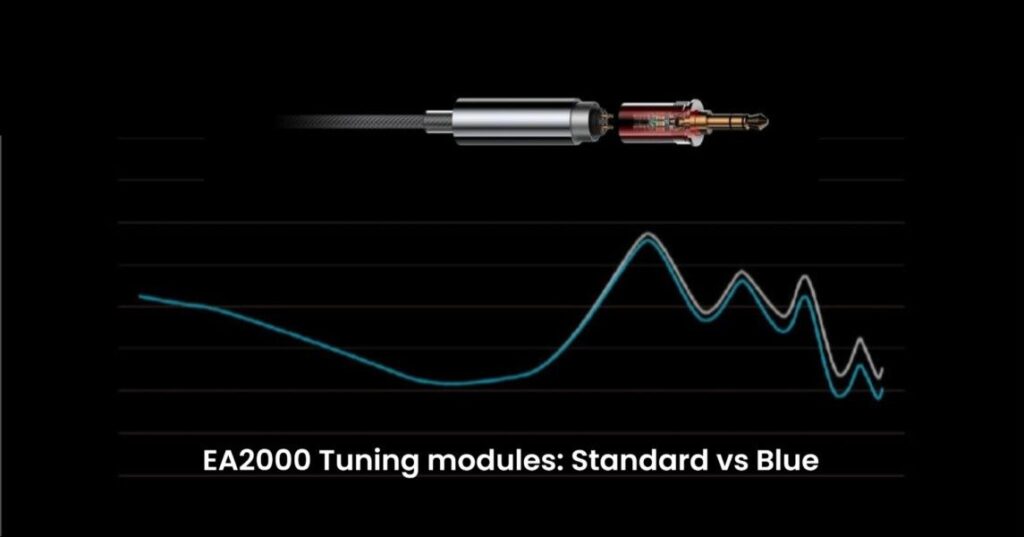
The tuning plug is rather exotic and it is a bit fiddly to swap the connector; definitely nothing that you will want to do very often. Still, it is a nice option to have if you find the original (black adapter) tuning too bright.
SIMGOT EA2000 SPECIFICATIONS
- 12mm Dynamic Driver (DD)
- 6 mm Passive Radiator (PR)
- Dual Magnetic Circuit & Dual Cavity Structure Dynamic Driver
- 1.9 Tesla Magnetic Flux.
- Impedance: 23 Ω
- Sensitivity: 114 dB
- Effective frequency response range: 20 Hz–20 kHz
- Detachable Cable: 120 cm Silver-Plated OFC Litz Cable 8 core, 152 strands
- Earphone Connectors: MMCX
- Cable termination: 3.5mm and 4.4
- Replaceable tuning module plugs are built into the exchangeable cable connectors. There are two tuning options for 3.5mm jacks, but only one for 4.4mm jacks.
Check the current price here:
- Linsoul: Simgot EA2000
- Amazon: Simgot EA2000
The review sample was sent us by Simgot for the purpose of this review.
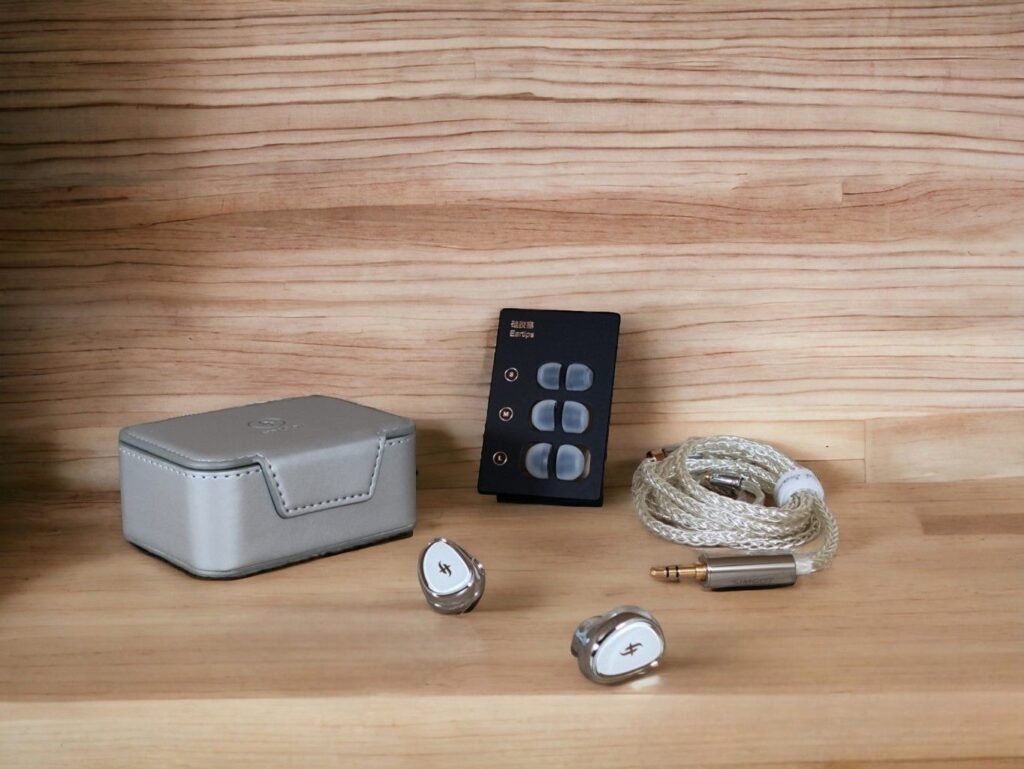
BUILD, DESIGN, COMFORT
The build quality and craftsmanship are stunning on the EA2000. The housing is all metal. They’re quite large because of the large 12mm driver. The cables are very nice and relatively thick. It fits comfortably in my ear, but it wouldn’t if it were any larger.
The supplied storage box is great; it has a magnetic lock and is just the right size, with a little mesh pocket for the adapters or extra tips.
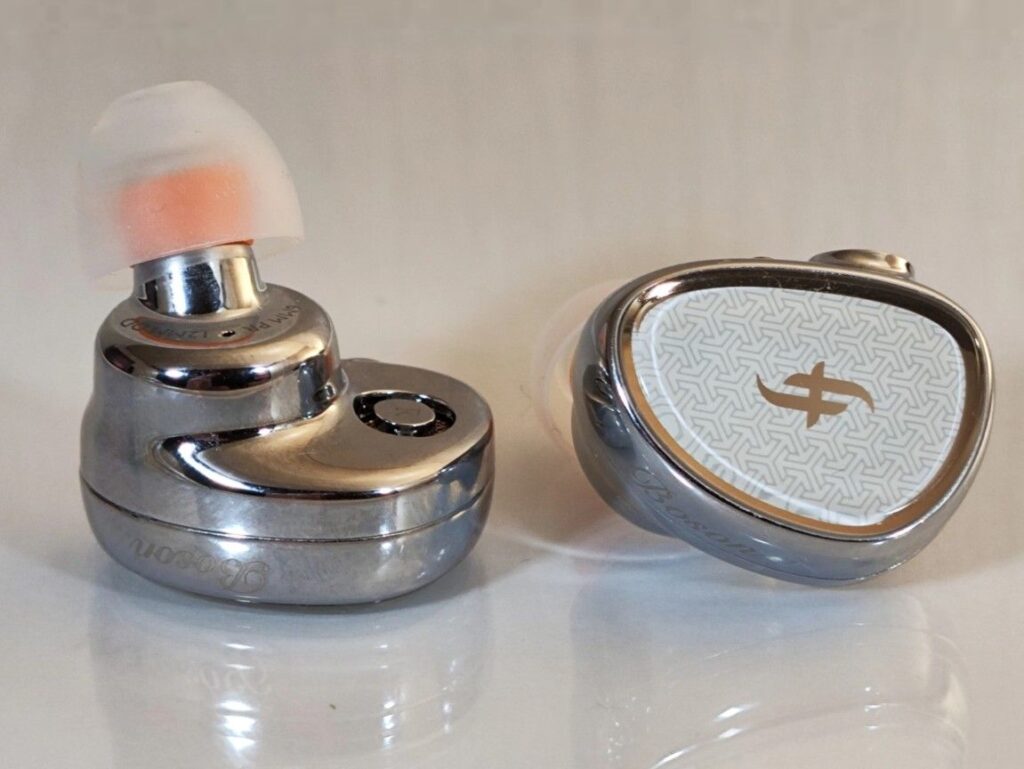
EAR TIPS
I did not get a proper seal with the surprise tips because they were either too small or too big, so I started out with my favorite go-to tip, the SpinFit CP145. They are a little bit longer and have a narrower opening than the stock tips. The sound is quite good, but I found it to be more V-shaped than I prefer, with more bass and treble presence.
I switched to the Azla SednaEarFit Crystal, which has a wider opening and a shorter tunnel than the SpinFit CP145. The sound got less V-shaped and more balanced with the Azla Crystals, which also isolate very well.
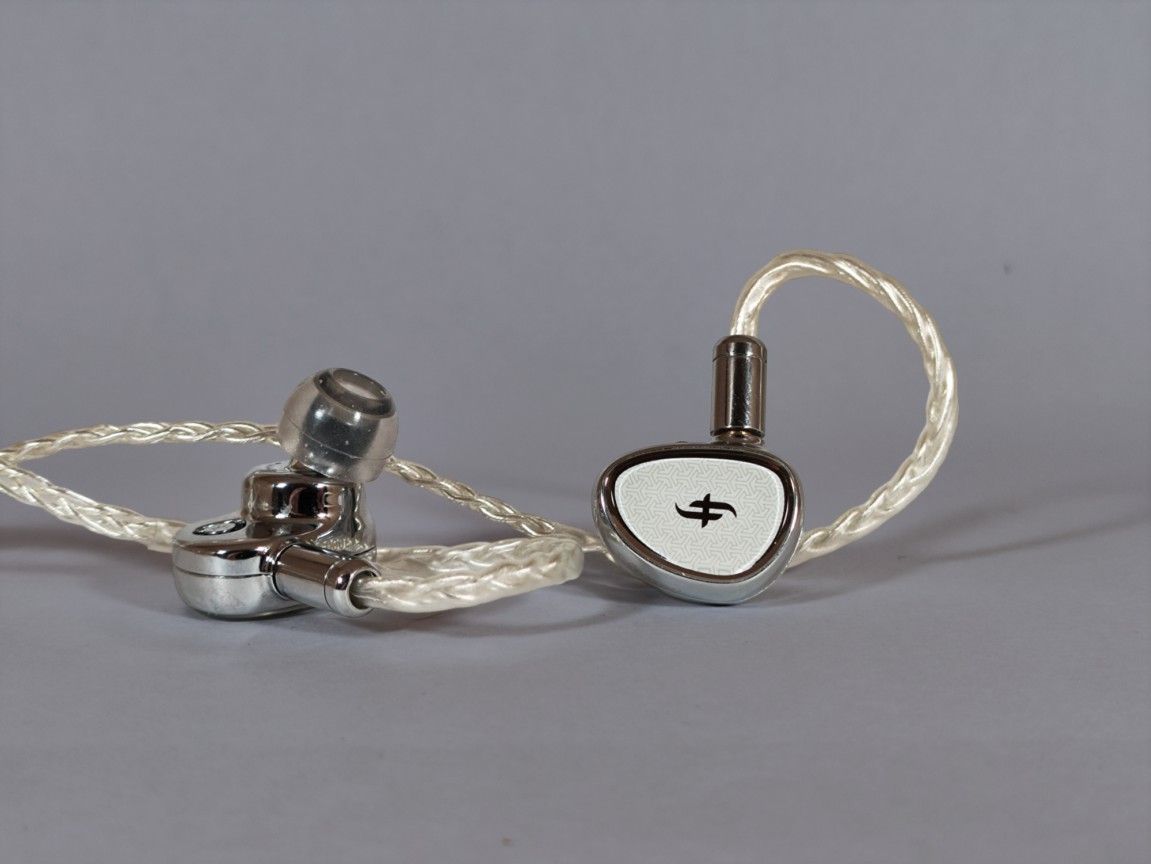
STANDALONE LISTENING IMPRESSIONS
For this session, I used the Rebel Amp with the RME ADI-2 DAC FS as a source. The Rebel Amp has a slight warmth to its sound, which I find a good thing for the EA2000. The Topping A90 gets a bit thin sounding in the midrange. I also find the Azla SednaEarFit Crystal tips to sound the best with more warmth than my usual favourite Spinfit, which sounded a bit too bassy and bright.
Muggen Fallskjerm by Jøkleba
The bass drum hits hard, and you can hear all the resonances from the drum. All the ambient sounds are easily distinguishable, and I can easily hear small details that I normally do not hear with most IEMs.
Higdon Violin Concerto: 1726 by Hillary Hahn
The solo violin is extremely nuanced and tender. The fragile percussion is equally detailed. It’s a wonderful experience. The soundstage is huge. I find it quite nicely balanced, but the EA2000 is definitely not treble-shy. When the orchestra and music get busier, it is handled with great control. There is good separation between instruments, and the sound stage is very large with great imaging.
Sunrise by Norah Jones
Norad Jones’ vocals are very present, and it takes center stage as it should. It has an insane amount of texture. Every little nuance and detail is revealed. The bass is nicely present, but not too much. It is neither extremely tight nor extremely full. There is lots of detail. The treble is crystal clear but not overly bright.
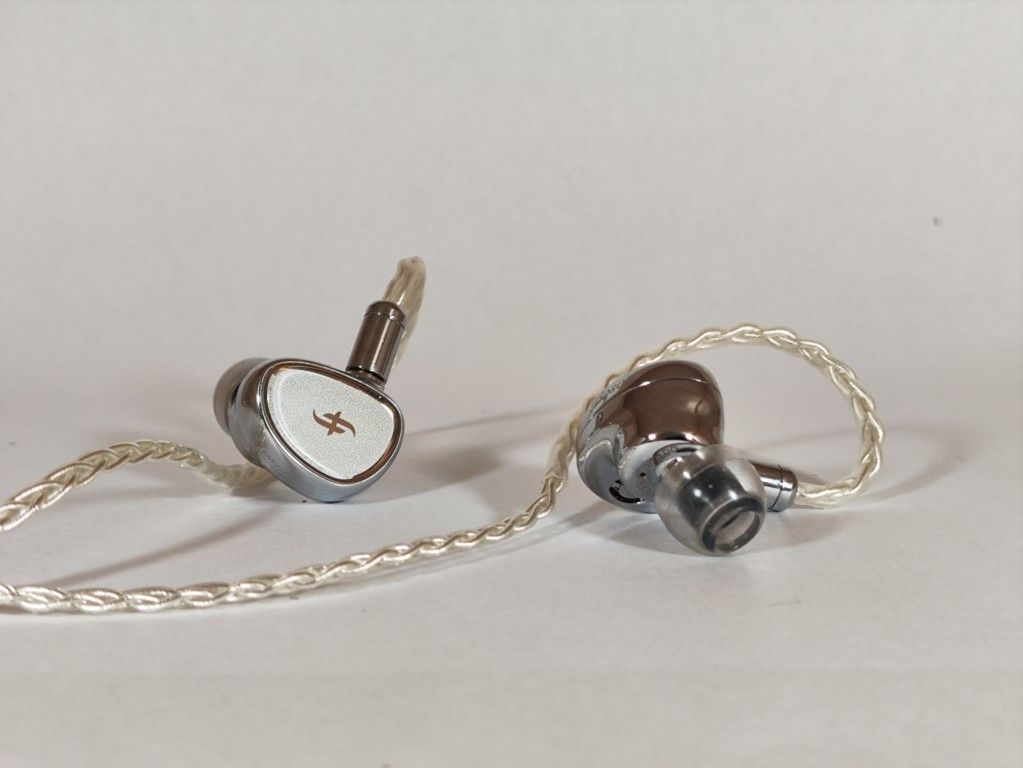
Georgia Lee by Tom Waits
This wonderful and tragic song is one of my favorites of Tom Waits’ performances. There is so much emotion in his voice, and the EA2000 has no problem rendering it with all the nuance it deserves. Even though the vocals get the center stage, the EA2000 has the ability to simultaneously bring all the little background noises and small sounds forward.
As Before by Olga Konkova
The cajôn drum is very punchy and powerful sounding, and the resonances and reverb from the room are easily audible. The piano is crystal clear. The vocals have lots of texture.
It Could Be Sweet by Portishead
The bass is just right, with lots of definition and a well-balanced presence. Vocals are very clear, but they get a bit sibilant, which can happen with this track. The presentation is very detailed, with a great sound stage and superb instrument separation.
Escape Route, by Boris Blank
The bass is present and warm-sounding, but not overpowering. The sound stage is huge, and the instrument separation is great. The travel is quite crisp, and the upper midrange is a bit dry.
Spontanious Compositorius by Thomas Agergaard
This tender piece with a saxophone, standing bass, and percussion sounds great. Very spacious and open, with lots of detail. The percussion is treble-intensive and gets a bit brighter than some might prefer. I personally find it nice, but I can understand if some might find it a bit too much.
Brahms Symphony No. 2 III by Paavo Järvi
I have heard this track hundreds of times, but still, I find myself a bit mesmerized by the presentation from the EA2000. It handles the complexity and dynamic range in a great way. Instrument separation is top-notch, and everything just flows naturally. There is no harshness or distortion in the complex parties, the treble does not get too bright.
Jambi by Tool
The aggressive fuzz guitars are very crisp, and the bass drum is full but tight. The vocals are very clear but can become sibilant. The bass guitar is full-bodied. There’s a large soundstage and tons of details.
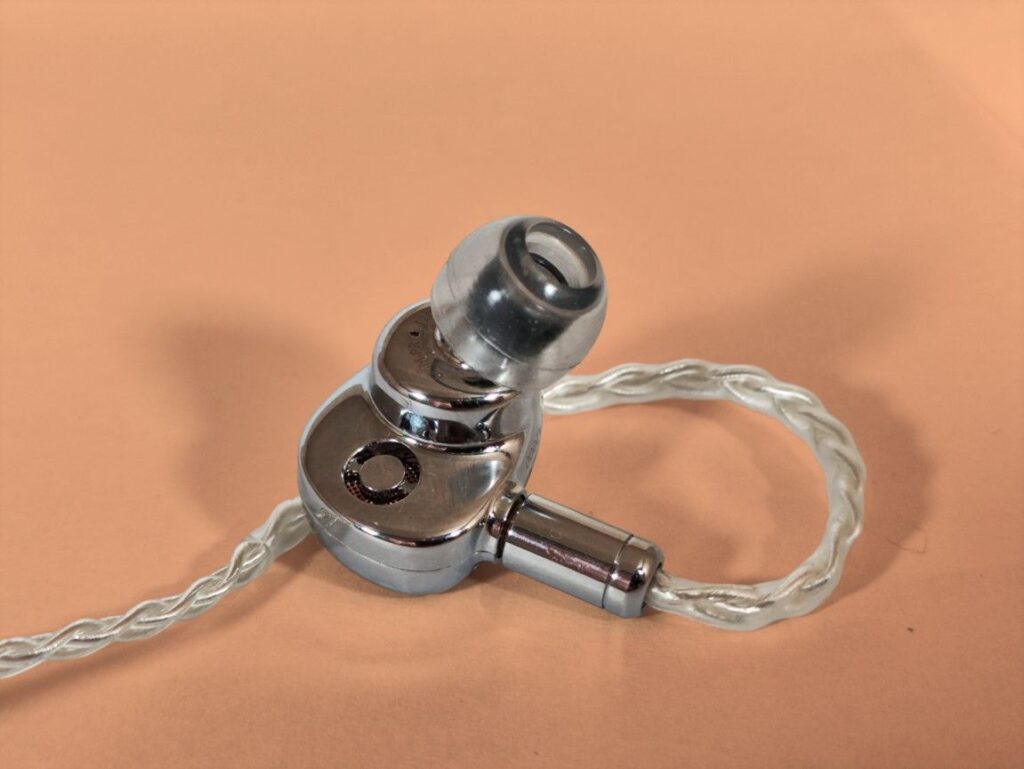
WRAPPING IT UP
Sound Signature
The sound signature depends, to some extent, on the tips used. With the Spinfit CP450 I found the sound to be more V-shaped, with the Azla Crystal tips, I find the sound to be more balanced, although still slightly bright. The EA2000 has some extra energy in the upper midrange and treble.
Treble
The treble is very present and extremely detailed. Mostly, it is pleasant, there can be occasional sibilance. It’s not dry sounding, but it is not what I normally would describe as liquid and smooth. That being said, I really appreciate the treble qualities of the EA2000.
Midrange
The midrange is very clear-sounding, with more focus on texture and detail than warmth. I do not find the midrange to be recessed; it is normally very present, but if you want a very full-sounding midrange experience, this might not be your first pick. The upper midrange is more pronounced, and along with the somewhat bright and crisp treble, there’s sometimes a hint of dryness. I found that getting a good match with warmer-sounding amplification and getting the right tips definitely altered the sound signature, and increased the midrange presence.
Bass
The bass has a very high quality with lots of definition and tactility. It is relatively warm-sounding. The quantity depends on the tips used. With the SpinFit CP145 tips, I found the bass to be very pronounced and sometimes a bit too much, but with the Azla tips, it felt very well balanced.
Soundstage and Imaging
The sound stage is very large with a good sense of air, and there is great separation of instruments. The layering is superb; the imaging is also very good.
Dynamics, Detail, and Timbre
The EA2000 is a very dynamic-sounding headphone. It has a dynamic bass, midrange, and treble. Both macro and micro dynamics are excellent. The detail level is top notch and very impressive across the board.
When it comes to timbre, it gets a bit difficult. The bass has a rather warm timbre. The midrange is more neutral and less full-sounding than the bass. The treble is very clear and quite crisp, but not overly so. I find the tuning very appealing, but on certain tracks I would like some more midrange warmth. The blue tuning plug will, however, address that.
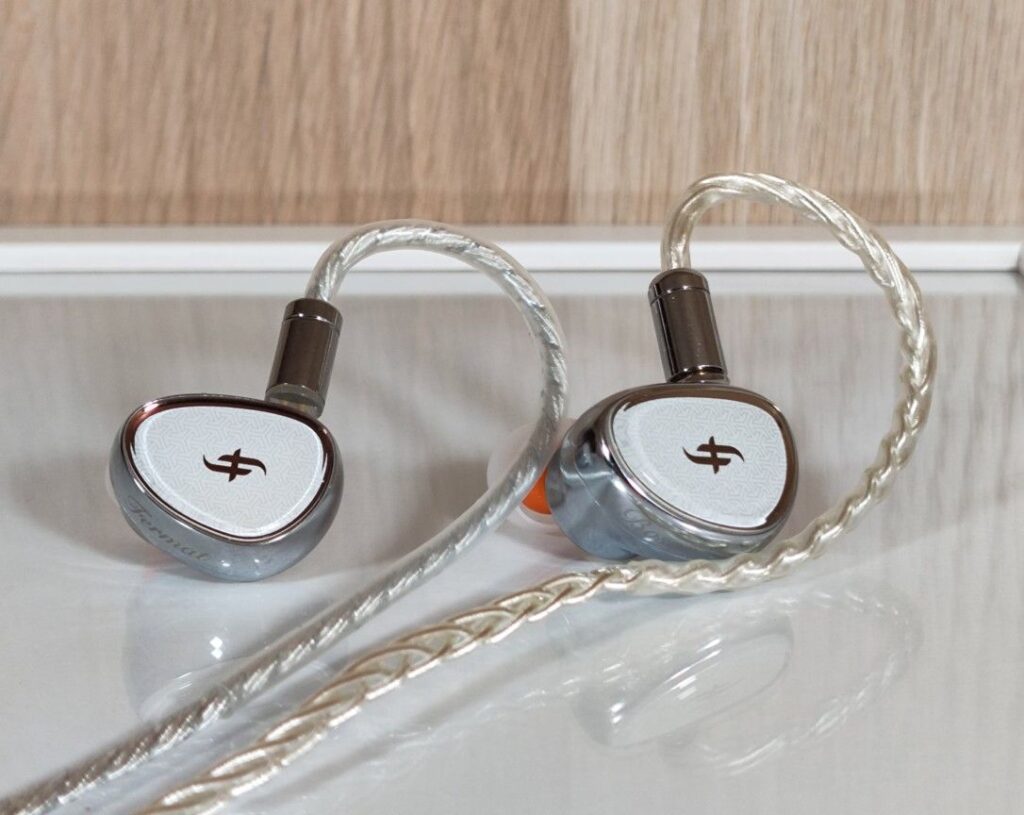
COMPARISONS
SIMGOT EA1000 vs. EA2000
I used the Topping A90 amplifier with the RME ADI-2 DAC FS as a source. Both IEMs had SpinFit CP145 tips installed
I have compared the EA2000 to the EA1000 with both the golden brass nozzles and the black ring steel nozzles. Generally, swapping the EA1000’s nozzles does not make an impact that is large enough to change the main differences between the EA1000 and EA2000.
The tuning filter plug on the EA2000 used was the standard black plug. I found the blue tuning plug to make the EA2000 sound more similar to the EA1000 in many ways. I prefer the standard black tuning plug, which sounds identical to a straight cable. All comments and comparisons are thus to be considered using the black standard plug of the EA2000.
Bass: The EA2000 has a deeper and more powerful bass. It does not necessarily sound like a more bassy earphone, but it has more presence in the sub-bass region. The bass is also more dynamic and better defined.
Midrange: The mids are a bit brighter with the EA2000, while it has a bit more weight and body with the EA1000. I find it to be a little bit more detailed with the EA2000.
Treble: The EA2000 has a clearer and brighter treble. Even when I have the black ring nozzles installed on the EA1000, the EA2000 sounds more airy, which is because of its extra presence in the higher treble regions, but also because of its higher resolution.
Soundstage, Dynamics, Detail and Timbre: Generally, the EA2000 feels more dynamic across the frequency spectrum. In addition, the soundstage is slightly larger, and instrument separation and imaging are better. I also find the general detail level of the EA2000 to be higher. Small background noises and sounds from instruments, e.g. resonances in the body of a plucked violin, are more audible. When it comes to timbre, they are differently tuned, but I find them both to sound very natural.
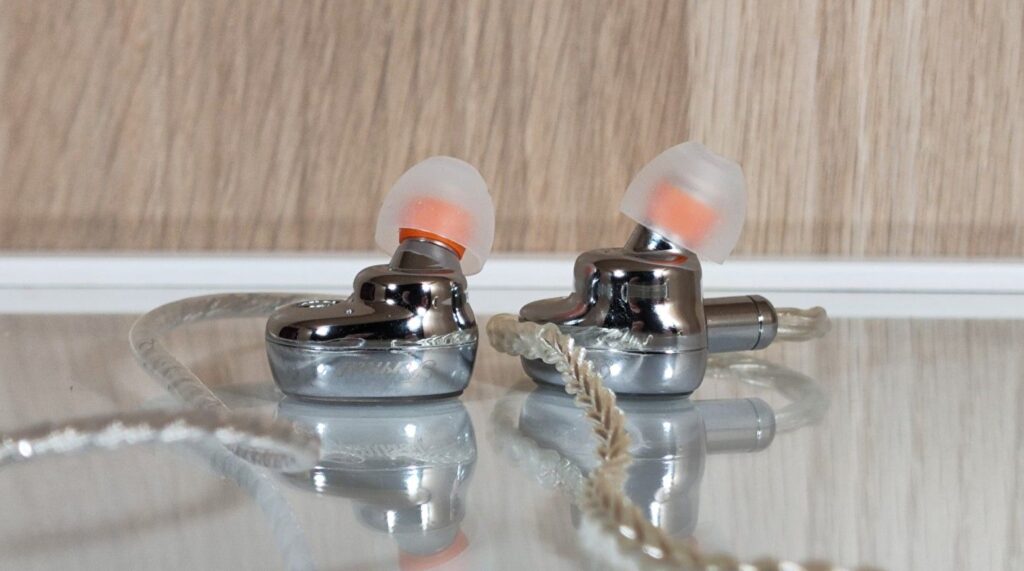
Concluding, the EA1000 and EA2000 are fabolous-sounding IEMs that offer great value at their respective price points. Both are impressively well built. They both come with tuning options, but the EA1000 has the best implemented solution.
Full Comparison here
- Buy on Linsoul: Simgot EA1000
- Buy on Amazon: Simgot EA1000
KIWI EARS QUINTET vs. EA2000
The Kiwi Ears Quintet is a 5-driver hybrid IEM which has gotten a great reputation for being a very solid performer at a good price. It’s currently at 219 USD which is a significant 30% less than the EA2000. The Quintet’s five drivers are as follows: One dynamic driver, two balanced armature drivers, one planar magnetic driver, and one bone conductor. It is a rather exotic setup but it sounds not too far away from the single driver EA2000.
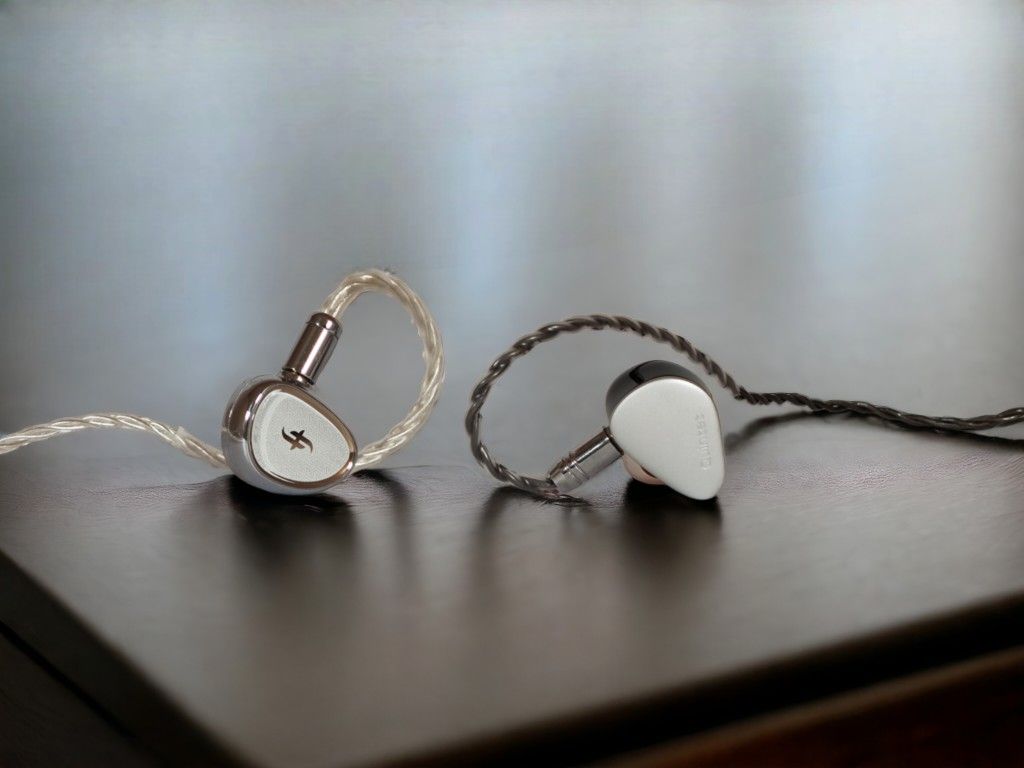
I used the Topping A90 amplifier with the RME ADI-2 DAC FS as a source. The Quintet had SpinFit CP145 tips, the EA2000 had Azla Crystals installed.
Sound Signature: In terms of perceived frequency response, they are quite similar. The EA2000 has a bit more energetic highs, otherwise tuning variations are relatively minor.
Treble: The EA2000 has more treble quantity. It is also cleaner and clearer, with a more natural timbre.
Midrange : The Quintet is a bit thicker-sounding, with more perceived warmth, although a bit dryer. The EA2000 sounds more natural and organic, with more detail.
Bass: They have relatively similar bass quantity. The EA2000 has a warmer, rounder bass that still feels well defined and detailed. The Quintet has great bass too, but it’s a bit drier and less organic-sounding.
Soundstage and Imaging: The sound stage is large with both earphones. When it comes to imaging, the EA2000 is more precise and has more space between instruments, as well as better layering. However, the smoother, less defined imaging of the Quintet can sometimes be an advantage, depending on the music.
Dynamics, Detail, and Timbre: These are both highly detailed earphones. However, I do find that the EA2000 is more detailed across the board, especially in the midrange and the treble. I also find it to have a more natural timbre. In terms of dynamics, both are good, but the EA2000 is superior both in macrodynamics and microdynamics. There is simply better articulation and dynamic contrast, both on a large and small scale.
In conclusion, these are both great IEMs with much in common. They have a similar sound signature and soundstage. However, in direct comparison, the EA2000 consistently exhibits better dynamics, detail, and imaging, offering a natural sounding tonality with beautiful timbre. Its treble is notably clean and clear.
While the Kiwi Ears Quintet holds its ground with a smoother and more relaxed presentation, particularly beneficial for certain busy tracks, the EA2000 generally excels in technical prowess. It delivers finer nuances, better dynamics, and a more natural timbre across various music.
- Buy on Linsoul: Kiwi Quintet
- Buy on Amazon: Kiwi Quintet
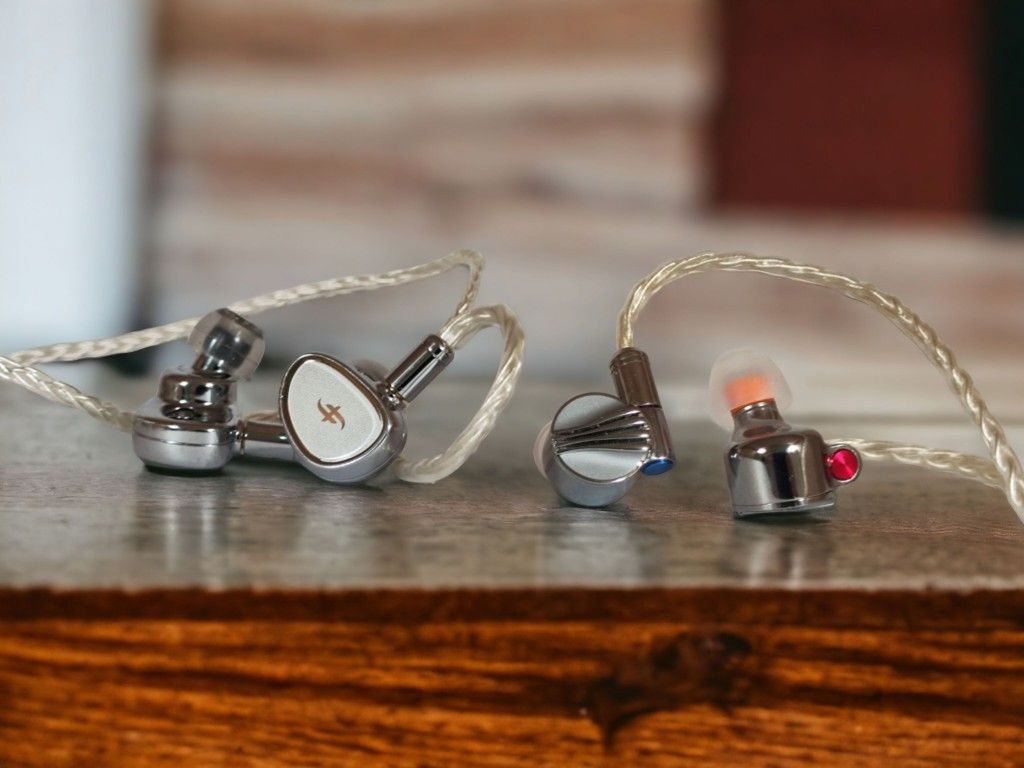
FiiO FD5 vs. EA2000
The Fiio FD5 is, as the EA2000, a 12mm dynamic single-driver IEM. It’s a well built, all metal IEM. The EA2000 is larger, but more ergonomically designed, the FD5 could ideally have more rounded edges, but they’re still comfortable. The FiiO FD5 used to be FiiO’s single dynamic driver flagship but now the FD7 has taken that spot. The FiiO FD5 is still available for 349 Euros from Fiio.eu.
Sound Signature: they are not too far apart in terms of sound signature, but there are significant differences. The EA2000 is brighter with a crisper treble and upper midrange. The FD5 has more generous midrange and midbass presence, it is a warmer sounding earphone with a thicker voicing that often is very appealing. It also can be too full sounding, depending on the music and personal preferences.
Treble: They both have high quality, clear and present treble that sounds very natural. The EA2000 often is perceived to be brighter and crisper with more articulated highs.
Midrange: This is where they differ the most. The EA2000 has a somewhat polite-to-neutral sounding midrange while the FD5 is quite warm, full and somewhat thick. Both have good detail.
Bass: Both earphones have a rather organic and well-rounded bass presentation, yet with great definition, extension and detail. The FD5 has, however, a thicker sounding bass, the EA2000 is tighter. The FD5 has significantly more midbass presence, which contributes to a warmer sound signature.
Soundstage and Imaging: They’ve both got a great open soundstage, but the EA2000 is somewhat larger sounding with more air, and the imaging is more precise. Layering is very good on both.
Dynamics, Detail and Timbre: I tend to find them equally dynamic and detailed, generally speaking. However the thicker and fuller midbass and midrange of the FD5 make details a little bit less pronounced. The EA2000 is putting detail more upfront while the FD5 has a more subtle presentation.
With regards to timbre, they both sound very natural and organic. However, the FD5 is warmer and often perceived as more musical, relatively speaking, while the EA2000 is a bit more technical.
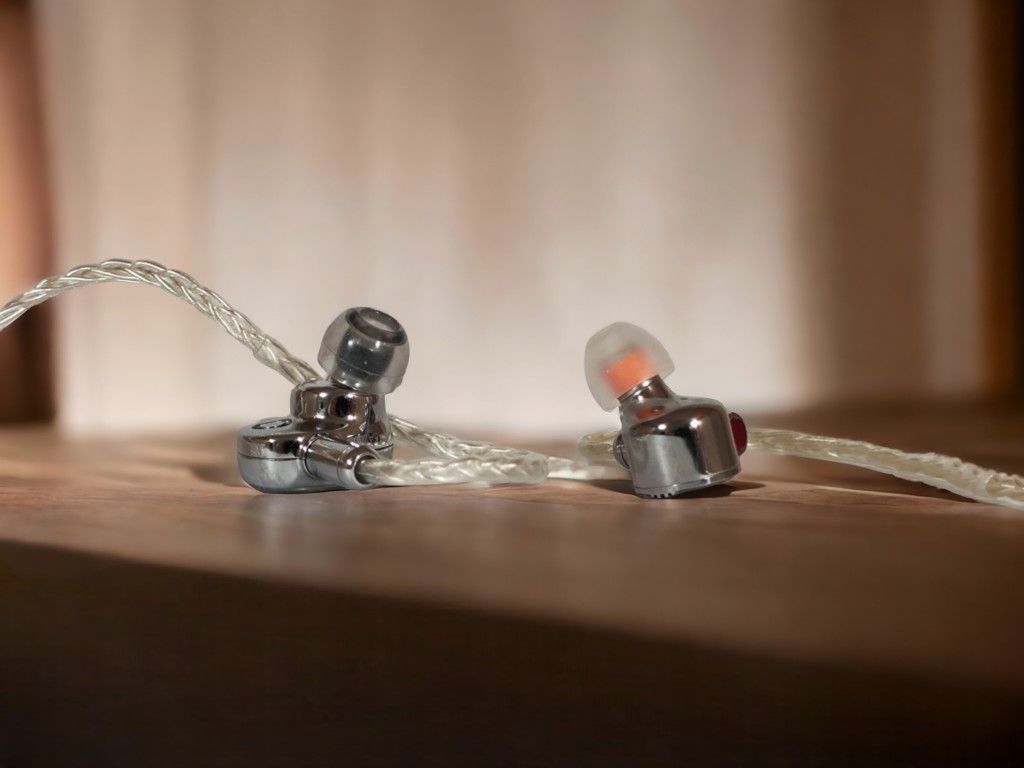
In conclusion, which of the two I prefer depends a lot on the music. For vocals and acoustic jazz, the FD5 is often a favourite. For orchestral music, the EA2000 is superb. For rock and electronic music, they have different strengths, the FD5 being smoother, the EA2000 tighter, crisper and with more focus on detail.
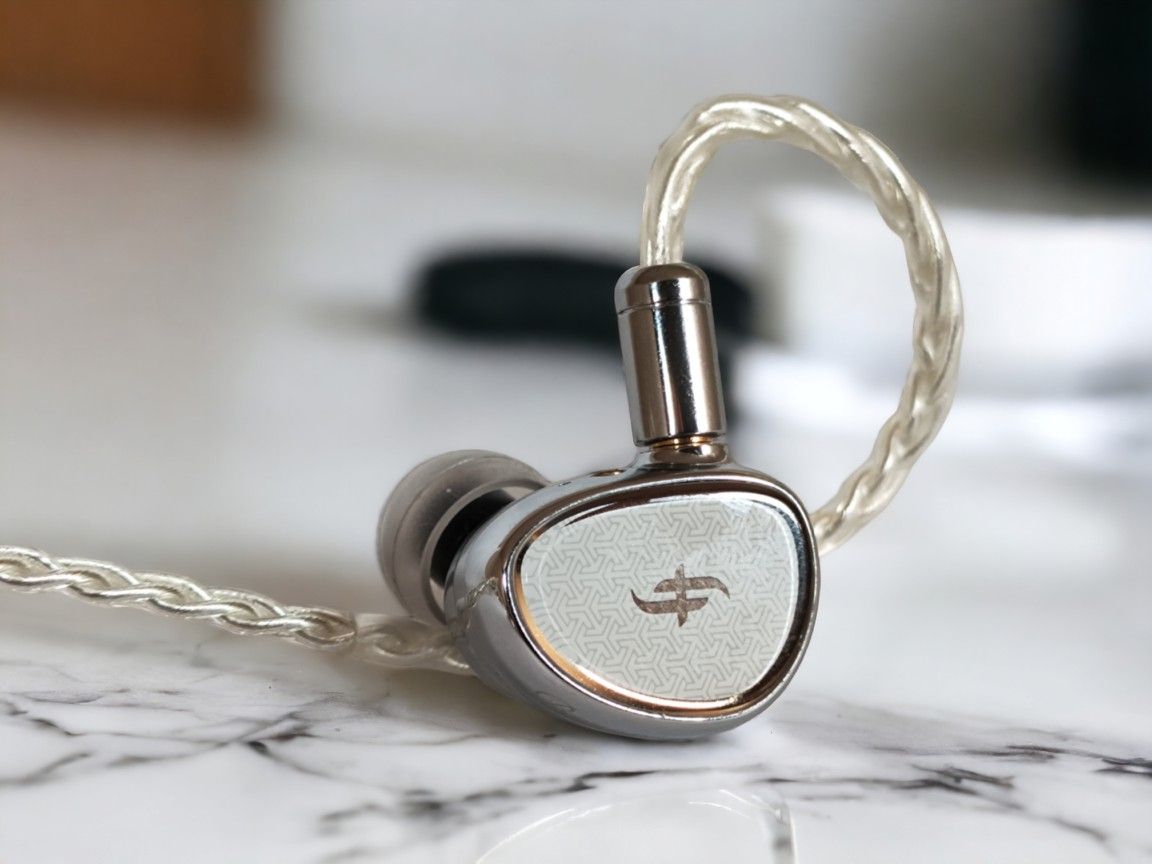
CONCLUSION
The EA2000 offers a bright and detailed sound signature, with clear and crisp yet natural-sounding highs, detailed but not overly warm mids, and an organic-sounding bass that is well-balanced, resolved, and tactile.
I found the EA2000 to be quite susceptible to swapping tips and amplifiers, and the two tuning plug options are nice to have. Making the EA2000 sound the absolute best for you might require some tweaking, but it’ll be worth it.
In conclusion, the SIMGOT EA2000 is a worthy flagship IEM with clear and dynamic sound, along with impressive craftsmanship and build quality.
Buy on Linsoul: Simgot EA2000
Buy on Amazon: Simgot EA2000
We make earnings through affiliate links and any purchase you make on Amazon or Linsoul clicking one of our links will give us a small provision at no cost to you.
We only get a provision for items that are not returned, so there’s no incentive for us to recommend something that’s not good.
Linsoul : Headphones, Earbuds, Wireless Earbuds, Desktop DAC/AMP, Portable DAC/AMP, Digital Audio Players,
Amazon: Headphones, IEMs, Headphone Amplifiers, Home Audio or Anything else.
.
If you enjoyed this article or other content on The Headphoneer, you might consider leaving a small donation to keep this website up and running. No donation is too small. Thanks for supporting us!
If you like our work please follow us on Instagram, Facebook and Twitter , it will help us grow. Sharing is caring 🙂


